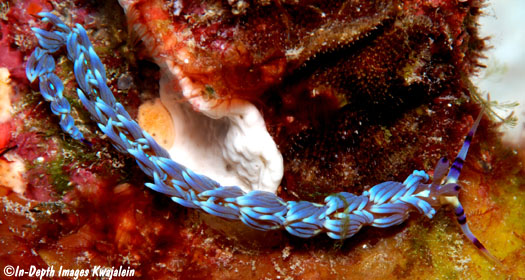
Long misidentified as Pteraeolidia ianthina, a temperate Australian species, Pteraeolidia semperi is a widespread species relatively common in the Marshalls, with specimens known from Enewetak, Kwajalein and Namu Atolls. We have seen them in a variety of lagoon reef, pinnacle, and seaward reef locations, but they seem to prefer the windward seaward reef in the grooves of the groove and spur system at depths of 2 to 5 meters. On the rare days when it is calm enough for us to swim into that zone to look, we can nearly always find multiple specimens. On one dive, I stopped counting at 100. It seems amazing that they manage to hang onto the bottom during the normal surgy conditions in this area. As you can see from the series of photos below, there is some color variation. Like several other eolid species, Pteraeolidia semperi cultivates symbiotic zooxanthellae algae (actually a protozoan) in its cerata, and is able to farm the algae for a portion of its sustenance. Normally, this species feeds on hydroids, which are equipped with quite powerful stinging cells called nematocysts. Like many eolids, the nudibranch is able to retain the nematocysts from the hydroids it eats, moving the undischarged stinging cells out to the tips of its cerata (the blue tentacles along its back), where they can be used for the defense of the nudibranch. I once allowed one of these nudibranchs to brush across the back of my bare hand and was impressed by the potency of the sting. I'm sure most potentially predatory fish would quickly learn to leave these things alone, which is probably why this nudibranch is one of the few species that is often out in the open in the Marshalls, exposed on the reef during the day. At Enewetak, an egg mass deposited by a 70mm individual in a laboratory sea table contained white ova spiraled into two loose whorls. Ova measured about 140µm within capsules 190µm in diameter. They hatched out in five days as free swimming veliger larvae. P. semperi is found throughout the Indo-Pacific and is often one of the more conspicuous nudibranchs. We have seen this species just about everywhere we have gone in the central and western Pacific. Considering the variation we see, it is possible there are actually several similar species using the same name. Pteraeolidia semperi was first reported in the Marshalls from Enewetak Atoll as Pteraeolidia ianthina by Switzer (1971).

Ths cerata vary somewhat in color, showing different shades of blue or brown.
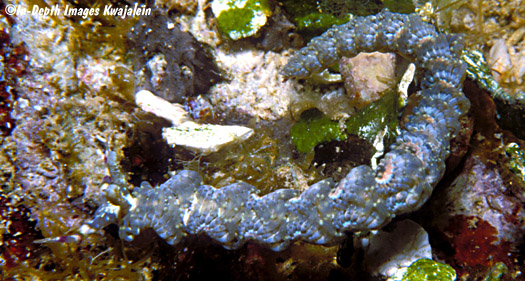
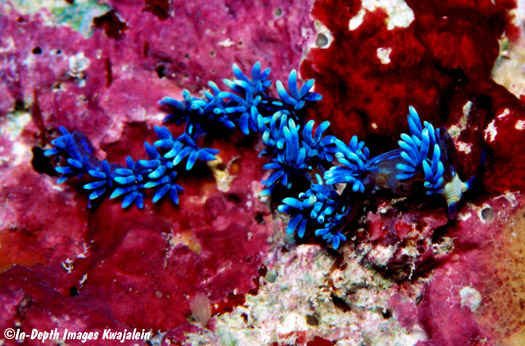

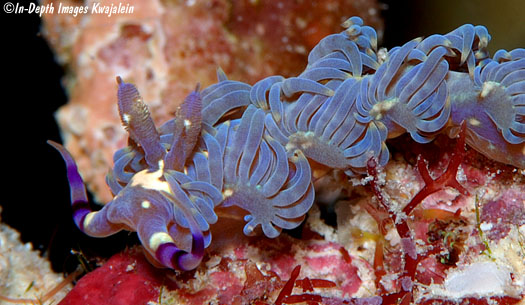
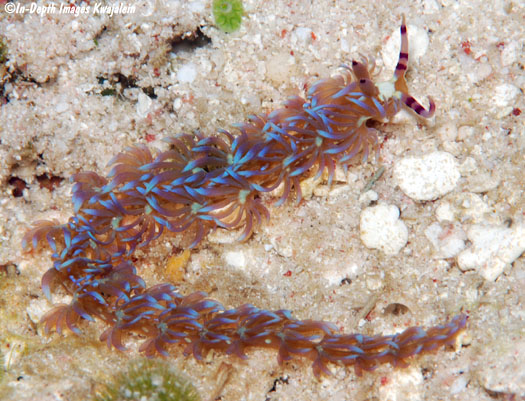
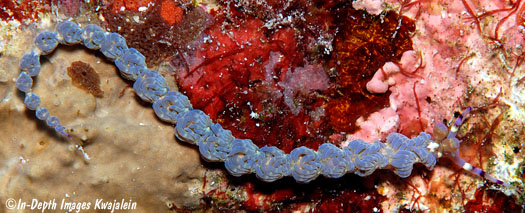
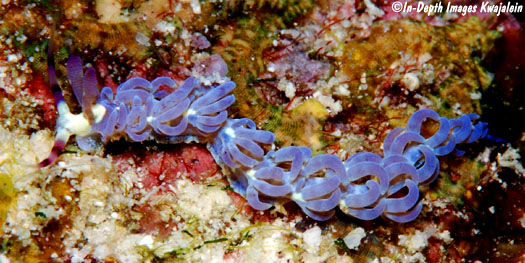
The closeup of the anterior end shows the tentacles and close-set rhinophores.
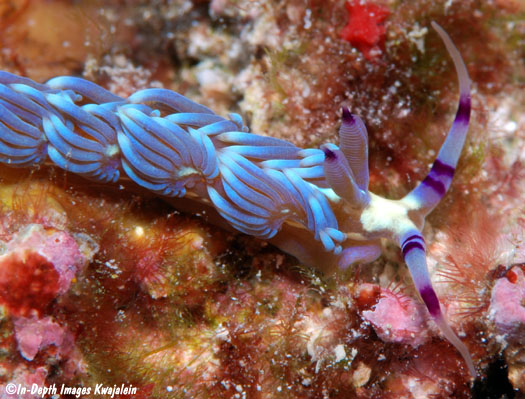
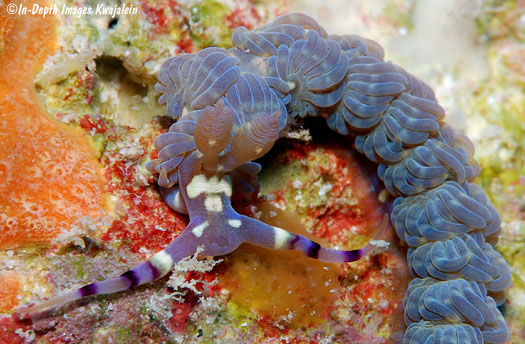
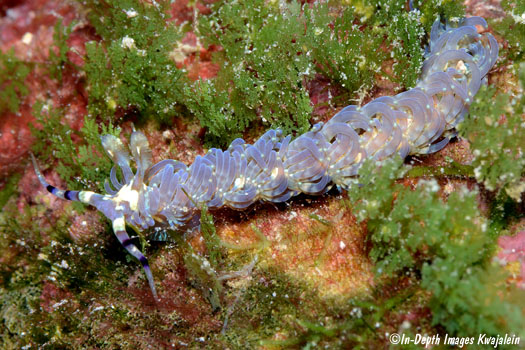
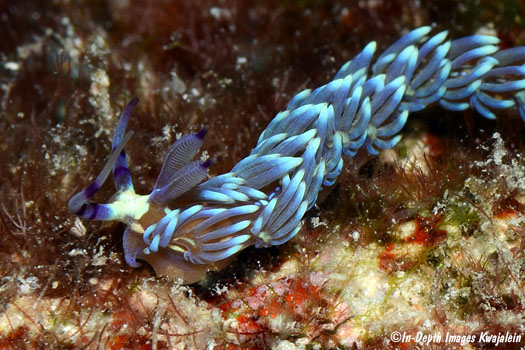
A tiny juvenile was photographed by Stan Jazwinski.
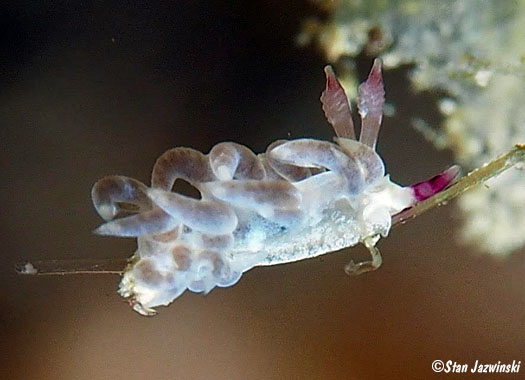
Some specimens are much lighter in color. I have heard that work is underway to determine if all the variations are actually the same species.
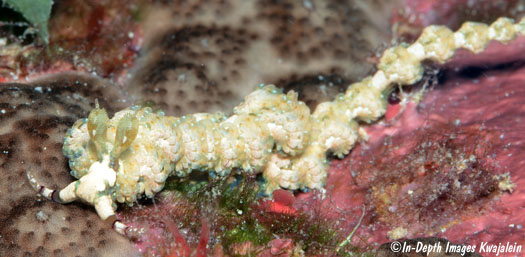
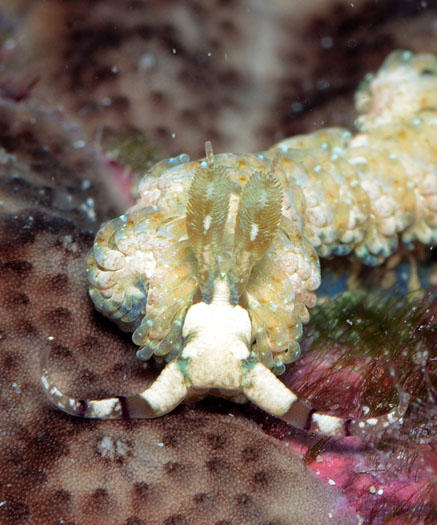
Two very large individuals found in lagoon algae patches in July and August of 2012 were also lighter in color than we usually see. One of them (fourth photo below) had lost the latter half of its body and appeared to be regenerating.
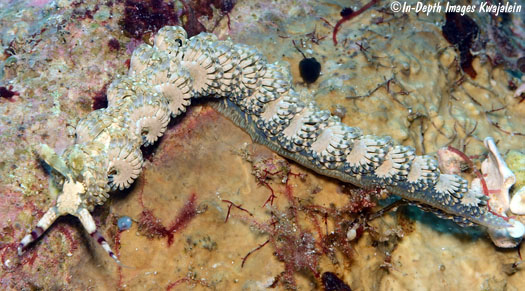
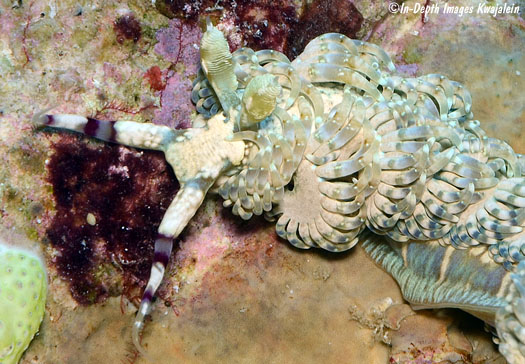
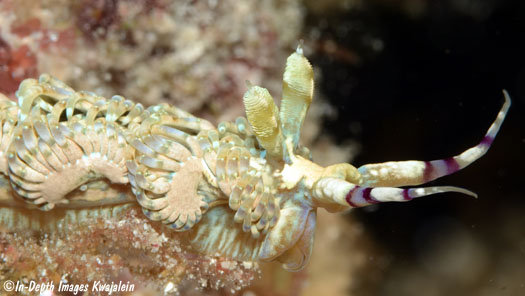
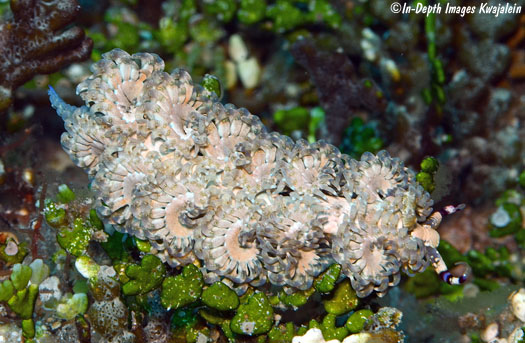
Created 8 January 2007
Updated 6 December 2019